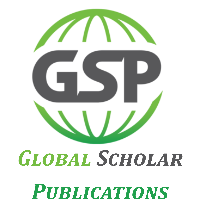Participatory evaluation and demonstration of livestock feed conservation technologies for small scale dairy farmers in Melokoza and Basketo special districts, Southern Ethiopia
South Ethiopia Agricultural Research Institute (SEARI), P.O. Box 2228, Arba Minch, Ethiopia.
Research Article
Global Journal of Research in Multidisciplinary Studies, 2022, 01(01), 014–021.
Article DOI: 10.58175/gjrms.2022.1.1.0024
Publication history:
Received on 23 August 2022; revised on 28 September 2022; accepted on 01 October 2022
Abstract:
The current study was conducted to assess feed conservation and utilization practices and evaluate nutritional characteristics of silages conserved under farmer’s condition in Melokoza and Basketo special districts. A total of 60 small scale dairy farmers were interviewed to assess feed conservation and utilization practices of the districts before actual experiment at backyards of 12 voluntary farmers that were latter divided in to three silage making groups with [desho (G1), elephant (G2) and native grasses (G3)]. Similar proportion of molasses (5%) and D.intortium (25%) were added to adjust the soluble carbohydrate and crude protein (CP) content of silages to the minimum expected level and facilitate fermentation. Each group has four farmers supplied with basic materials including plastic sheet for lining of silo and shading. Data of each silo within each group was averaged and used as a treatment unit in the design of the trial (RCBD). Physical quality characteristics of silages were assessed through sensory evaluation whereas nutritional analysis was made in Hawassa University, Animal nutrition laboratory. As the result from quick survey, 95% of the respondents do not experience feed conservation and technical skill limitation was reported as the major reason for low adoption. 70% of the respondents use crop-residue for copping feed scarcity. However, the experimental work on silage showed that all ensiled materials were excellent in physical qualities. The DM contents of G1, G2 and G3 were 45.03, 29.45 and 50.36 whereas IVDMD were 77.6, 64.9 and 59.0% respectively. CP values ranges from 8.18 to 9.22%. The pH values obtained ranges between (4.02-4.18) which was the desired level for quality silages. Hence, it could be concluded that silage making is one of the best feed conservation option to enhance nutritional sufficiency of small scale dairy farmers with the superiority of G1 which was excellent in most tested parameters. Nevertheless, animal experiments are necessary to determine the effects of these variations in silage composition on animal performance.
Keywords:
Feed conservation; Silage; Nutritive quality; Participatory evaluation; Small scale farmers
Full text article in PDF:
Copyright information:
Copyright © 2022 Author(s) retain the copyright of this article. This article is published under the terms of the Creative Commons Attribution Liscense 4.0
